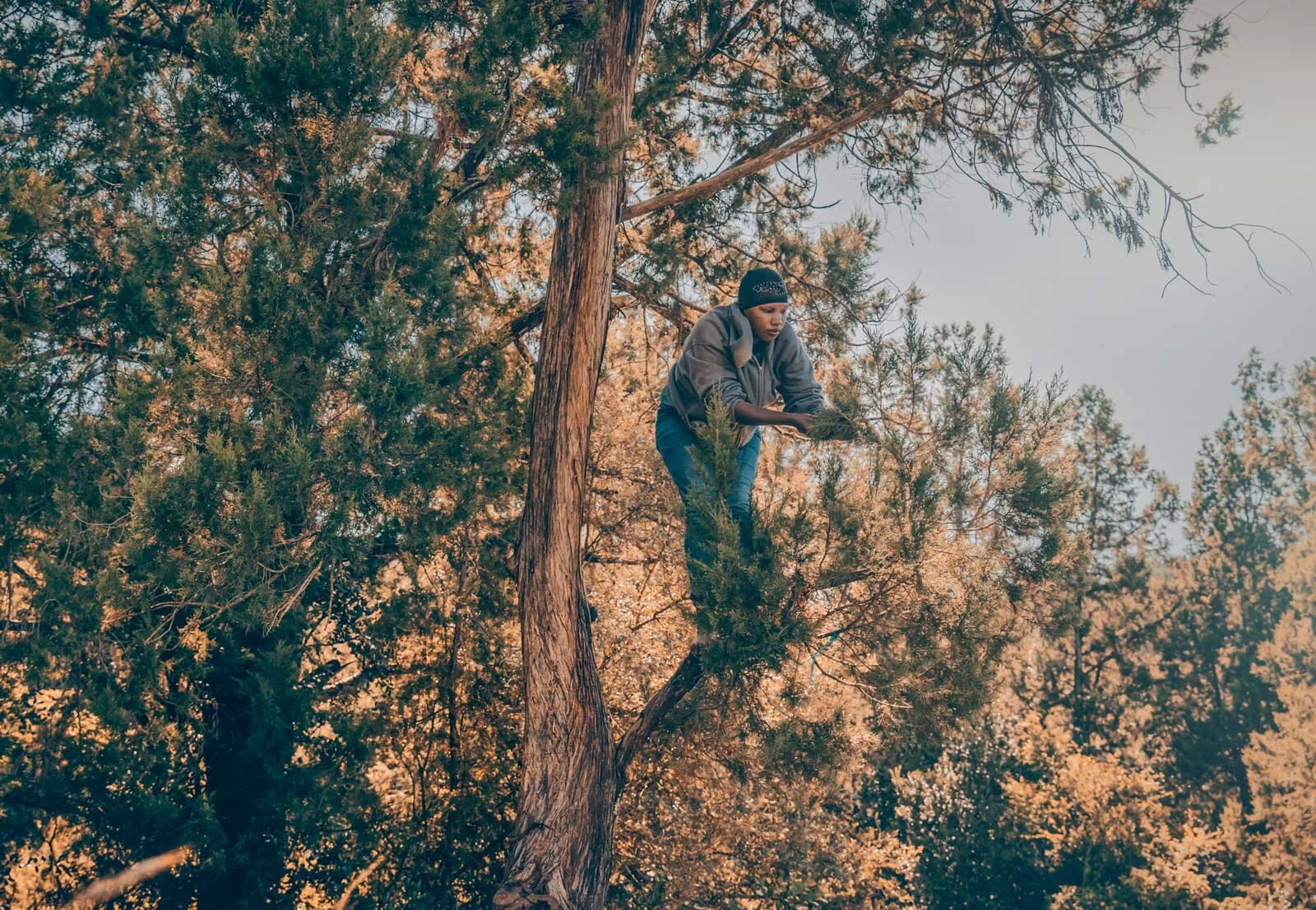Story told by: Guy Brennan of Procera Gin
Innovation is a core element of the Procera DNA. While the world of gin has gone about its business in a very similar and successful way for hundreds of years, we have pioneered two fundamental changes to the gin-making process. We believe that these changes will become gospel in the future for other gin makers, and allow gin to be seen as a true sipping and terroir spirit, which unfortunately it hasn’t been historically.
Our innovation has been two-fold: 1) we discovered a superior and more sustainable, sun-drenched species of equatorial African juniper and made this the heart of our gin recipe; 2) we distill only fresh green and undried juniper, thus allowing the true taste of the African terroir to be experienced by consumers far from our African soil.
Superior Juniper Varietal
There are over 60 species of juniper in the world, but 99.9% of gins use Juniperus Communis (or common juniper) as their main ingredient. There is only one juniper species native to the Southern Hemisphere and it just happens to grow only above 5,000 feet on the African equator, and this is Juniperus Procera. Whereas common juniper grows as a small bush, African juniper comes from the giant, majestic Procera tree (“Procera” meaning tall in Latin).
It has been commonly held by gin makers that the best juniper berries come from the sun-drenched Mediterranean, as longer summer sunshine hours make a better, more flavourful product. It’s the same logic that says Italian tomatoes are superior to British tomatoes, for example. It follows then that juniper which grows on the equator, with 365 days of summer sunshine and temperatures always above 70 degrees Fahrenheit, must be richer and riper than its European counterpart, and it certainly is. Fresh Procera juniper is nuttier and earthier than dried communis, and we believe the world will come to prefer it as the backbone of gin.
Distillers these days make countless varieties of gin by simply changing the citrus or spices, but virtually all use Juniperus Communis, which grows nowhere near their distillery, and which they buy in 50kg sacks from a global commodity broker. This is even more bizarre when juniper makes up 80%+ of the ingredients by weight in gin recipes. At Procera, we believe juniper should not only be at the heart of the flavour profile but also the heart of a gin’s story, and we set about doing what seemed almost obvious to us. It is incredibly surprising that this would make us the exception rather than the rule.
We’ve had the opportunity to do this as Nairobi, Kenya lies at 6,000 feet above sea level and is surrounded by native Juniperus Procera wild forests. We work with the local communities and the Kijabe Forest Trust to collect the berries in season after the short rains in the middle of the year, with the majority of the revenue going to the harvesters themselves and not middle men. By using Procera trees sustainably, we are also saving this magnificent species from its more recent use as a source of timber. Because we are able to distil in such close proximity to our juniper source, this allows our second key innovation, which in many ways is even more important in our quest to modernise a centuries-old industry: our use of fresh, undried, unfumitigated juniper to make our gin.
Fresh juniper for a true sense of terroir
Our Master Distiller Roger Jorgensen is a real green thumb who has long held the conviction that gin made with fresh juniper offers a more complex and true representation of the juniper berries and terroir in which they grow. When I brought Roger our first sample of Procera berries, he turned to me and said, "this is going to change the world of gin.” In blind tastings and with industry experts, Procera consitantly outperforms other gins and we believe this is in large part due to the fact that we use fresh, green, undried juniper. We can do this as we collect our juniper mere miles from our distillery, while almost all other gin makers have never been lucky enough to see an undried juniper berry in their life.
The best way to describe the difference between fresh and dried juniper is by using the example of fresh citrus or lime, versus dried lime. They are both different but fresh lime sings with brightness and is a true representation of where it is grown. Dried lime is lovely and rich and caramelised, but it loses its individuality and sense of place, with dried lime from different places almost impossible to tell apart. We are able to do this by collecting our junipers fresh and then vacuum sealing them and freezing them immediately so when we distill throughout the year, we are in fact distilling bright, fresh, green, undried juniper which you can immediately notice when you smell a Procera Gin let alone taste it. It has a greenness and umami note that is impossible to replicate with dried juniper, and this is why we are so proud of what we have created, through a combination of geographic chance and Roger's decades of experience and experimentation with juniper and gin.
We believe through our commitment to innovation that we have added something which other gin distillers can embrace to move the category towards a future with less tonic water and more bone dry martinis, using gins that speak to the terroir of their juniper, not just the citrus and peppers.







